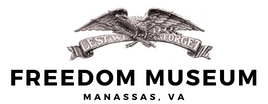Escaping the Impossible
S/Sgt Monaghan’s
Final Flight
The Maruson crew, with S/Sgt Monaghan flying as right waist gunner, was flying in the high right element lead ship position of the Lead Squadron with Lt. Kaiser’s plane on the right wing in the formation join-up plan during Group-assembly operations. After the collision, the Markuson plane, B-24 Model #42-51340, 576th BS Identifier – CI, Call Letter “M”, no nickname, crashed at Skeyton, England, with two crew members managing to bail out safely: 2Lt. Harold W. Huchcroft, the Co-Pilot, and T/Sgt. Paul L. Cain, the Flight Engineer.
This aircraft had flown a total of (65) combat missions when the accident occurred. The accident happened at 0715 hours when there was poor visibility at assembly altitude. In fact, the Report of Aircraft Accident placed responsibility for the accident was “100% Weather.”
A statement by 2Lt Huchcroft said -
We just finished the Group assembly and started out to the Wing assembly. I was on the controls when we entered the clouds. We were leading the high element in the lead squadron. We were in position, and the 578th Squadron plane took our wing position, which had not been filled. Upon entering the cloud, Markuson took over the controls, but lost sight of the squadron. I looked out and could see our wing man still in position.I then looked at the instruments and noticed we were starting to descend so switched to interphone and told the pilot I would help keep the altitude and heading while he looked for the main formation. We were both on the controls at the time.
I looked back at the instruments and then heard a bump on our plane. I looked out and saw the wing man pulling away in a bank and noticed the No. 4 engine gone. I turned to the pilot and reached for the C1 (autopilot), which was on and set up. Markuson was fighting the controls, and our plane seemed to stay straight and level for several seconds. I yelled at Markuson twice to see if he wanted to turn the C1 on, but evidently he didn’t hear me. We started into a spin to the right I think, and Markuson yelled, “Bail Out” so I rang the bell and waited a few seconds.
Markusopn yelled three more times to bail out so I rang the bell again and started to get out. Just then the plane went into a more violent spin and either pinned me to the seat or ceiling, I think it was the seat. I managed to pull myself out of the seat and could see Markuson trying to pull himself out. I crawled over the radio operator’s legs and also the radar man’s legs and went out the bomb bays. Sgt. Cain, the engineer, was transferring gas at the time and as soon as we were hit, he opened the bomb bays and put his chute on and went out with part of the bombs. When I hit the slip-stream, I flipped over six or eight times and pulled the rip cord. The chute opened immediately.
I saw a string of bombs coming out of the plane just as my chute opened, but my back was turned after my chute opened. Our altitude, at the time of being hit, was 12,500, feet and I expect we were 5,000 to 6,000 feet when I jumped. I came down right over the crashed plane and flames seemed to be a good 500 ft high. I landed with the wind to my back about a quarter mile from the crash in an open field. I could see flames from the crash and hear the bombs going off. The pins in the bombs had been pulled.
According to Huchcroft, there was only a minute or so to get out before the plane went into a spinning dive, making escape impossible.
Many of the Freedom Museum’s items are donated by local families to tell the story of veterans from Manassas, Manassas Park and Prince William County and their patriotic contribution to preserving our liberty. To see this artifact and much more, visit us at our brand new location.

